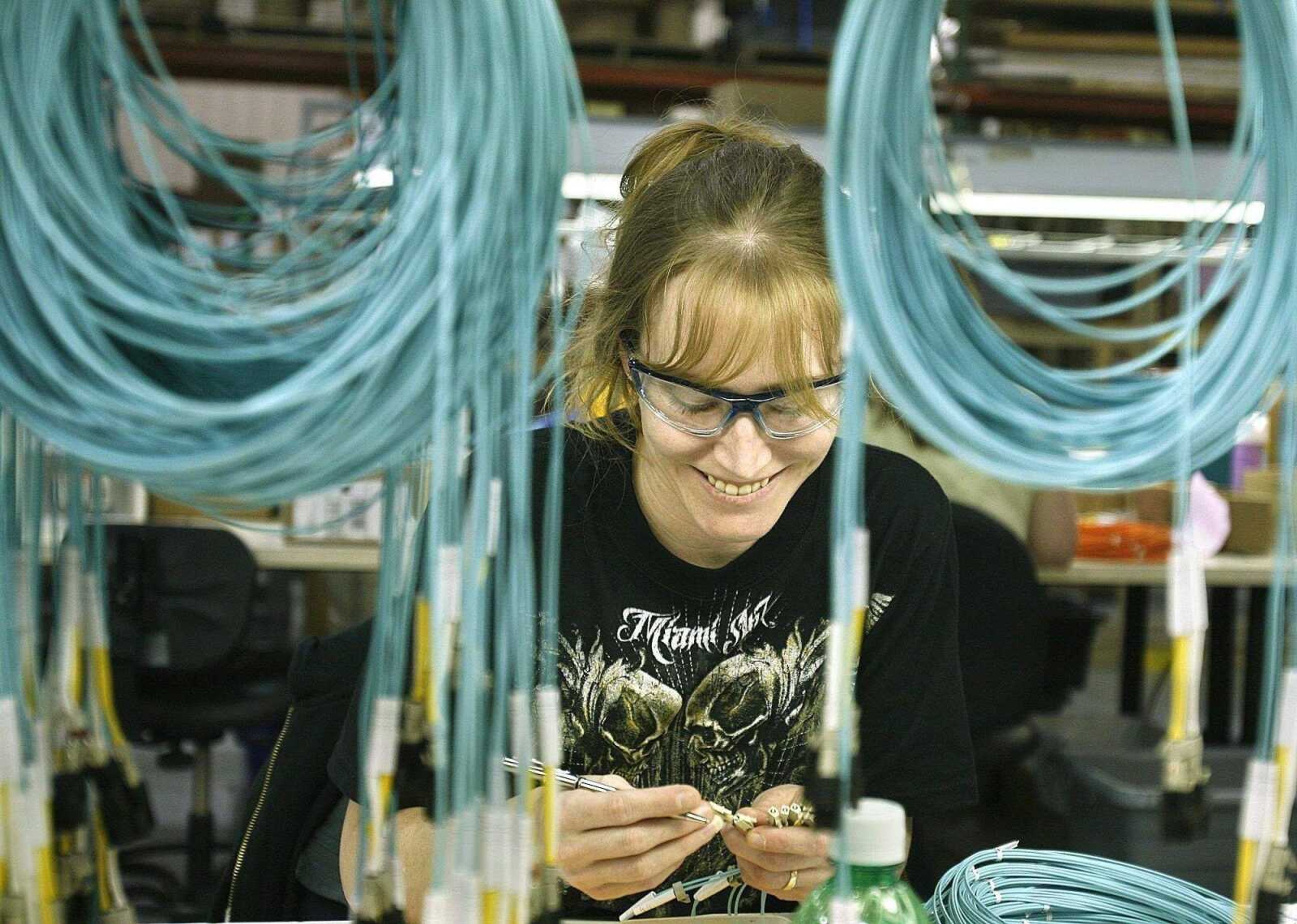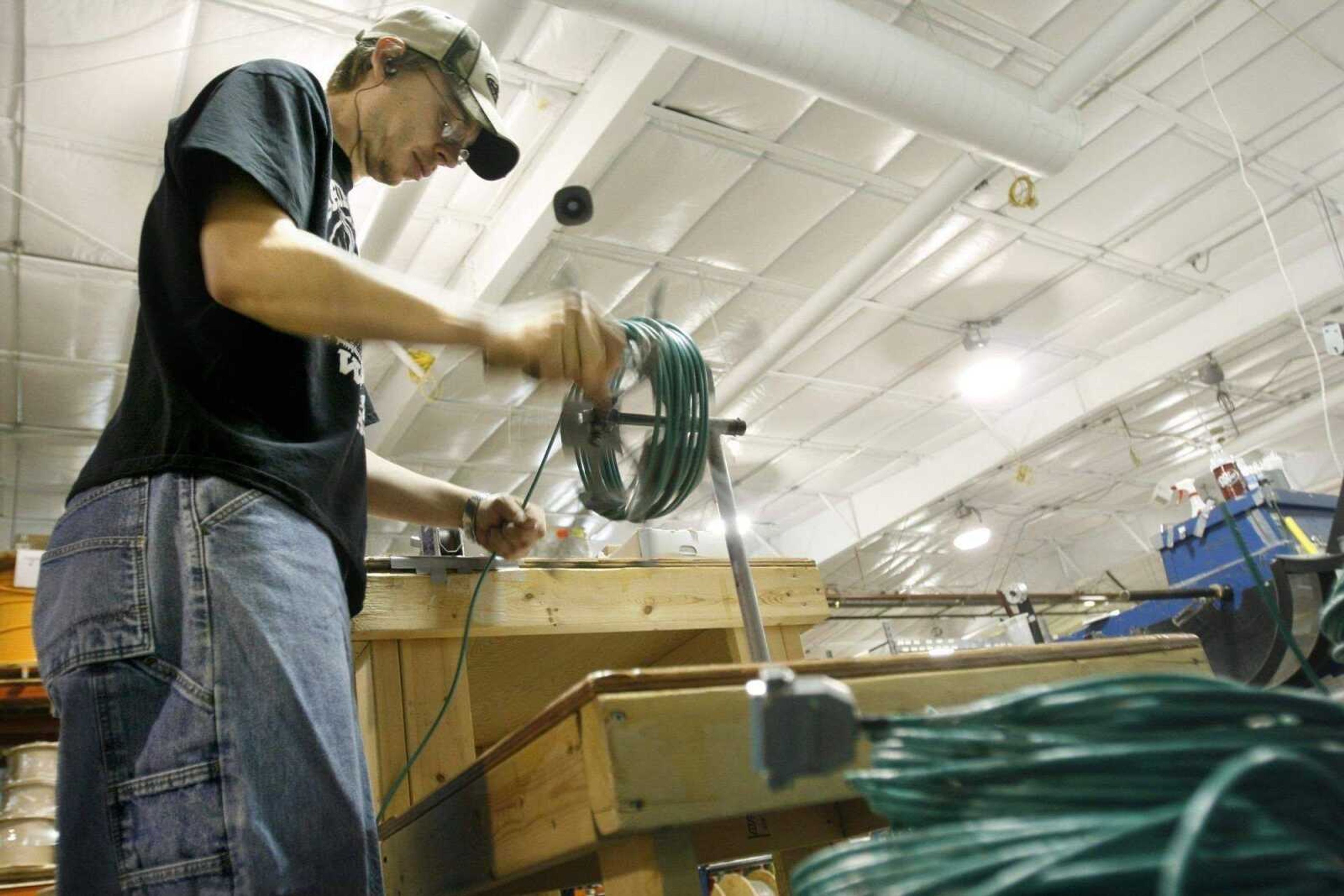Fruitland manufacturer supplies cables to Fortune 500 companies
Major Custom Cable president Scott Wachter understands the role his company plays in broadband technology. As a manufacturer of data and communication cables for Fortune 500 companies such as AT&T, as well as government agencies including NASA and the Department of Defense, the Fruitland-based business ships between 5,000 and 7,000 cables each day. Many of those fiber optic cables are used to provide high-speed Internet and data network access for businesses...
Major Custom Cable president Scott Wachter understands the role his company plays in broadband technology.
As a manufacturer of data and communication cables for Fortune 500 companies such as AT&T, as well as government agencies including NASA and the Department of Defense, the Fruitland-based business ships between 5,000 and 7,000 cables each day. Many of those fiber optic cables are used to provide high-speed Internet and data network access for businesses.
Wachter said his company first saw an increase in demand for fiber optic cables in 2005 as cable television providers offered a digital subscriber line for customers. He thinks the federal economic stimulus package's $7.2 billion allotment for broadband expansion could also boost business.
"Because of the demand for broadband Internet access, Internet providers must have improved internal infrastructure to provide more subscribers with faster speeds," Wachter said. "Major Custom Cable provides fiber optic cabling for this infrastructure build-out."
Major Custom Cable, 281 Lotus Drive, is part of the RHC Holding Corp., which includes Rapco Horizon in Fruitland, NAFTA Inc. in Del Rio, Texas, and Acuna, Mexico, and Horizon Wire and Cable in Leominster, Mass., and Toronto.

Major Custom Cable began 19 years ago in Frohna, Mo., and moved to its current location in 1996. About 100 employees work inside the 46,000-square-foot facility.
Major Custom Cable began producing copper products for phone and computer systems in 1990 and added fiber optic products in 1995.
Fiber optic cables transmit over longer distances and at higher data rates, or bandwidths, than other methods. The cables can be used over distances of several miles and transmit at up to 10 gigabits per second.
Copper cables are used for lower transmission rates over shorter distances such as 200 to 300 feet. Both cables are used for telecommunication facilities, homes and high-speed data centers.
Wachter said business briefly slowed down when new Internet-based companies that had started between 1995 and 2001 saw their market values diminish from 2000 to 2002 in the burst of the dot-com bubble.
"9/11 also contributed to the slowdown," Wachter said. "The company continued to provide a high quality product delivered quickly at a competitive price. The market began to rebound in 2003 as the general economic conditions nationwide began to improve, and so did MCC sales."
The process begins in the company's warehouse. After an order is received by phone, e-mail or fax, a thin cable is pulled from the shelf and given to a worker who coils and cuts the cable to an appropriate length. Once the cables are wrapped, they are taken to a fiber optic or copper assembly area.
The fiber optic cable preparation process begins with the removal of an outer jacket, leaving individual strands of fiber exposed. Fibers are cleaned and inserted into a connector with an epoxy. Connectors are then placed in an oven and baked until the epoxy hardens. Excess fiber is cut from the connector.
In the copper assembly area, the cable is prepared by removing a portion of the outer jacket to expose the inner conductors, which are then inserted into the connector. The connector is then placed in a crimping machine that fastens the wire to the connector and automatically tests the copper cable for continuity.
bblackwell@semissourian.com
388-3628
Pertinent address: 281 Lotus Drive, Cape Girardeau, MO
Connect with the Southeast Missourian Newsroom:
For corrections to this story or other insights for the editor, click here. To submit a letter to the editor, click here. To learn about the Southeast Missourian’s AI Policy, click here.










